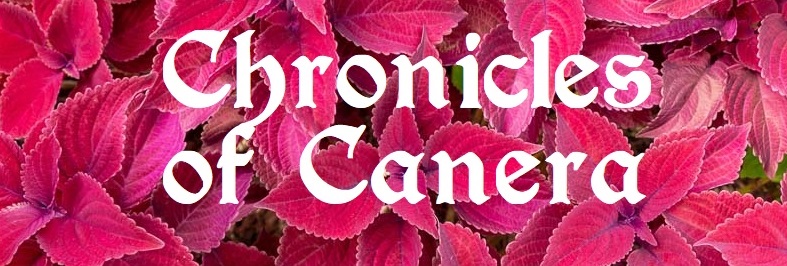Sekiune (SEK-ee-oon)
People native to the Sekiune Desert.
Historically, the various tribes were subjugated by whichever tribe/leader was strong enough to occupy the Skyukuvar, which has been Narzanthé for about 6 years.
The Sekiunes traditionally live in nomadic tribes, and have a long history of violence, both against each other and against outsiders, which is near-unheard of elsewhere on Canera. The tribes along the northeastern border periodically raid towns and villages for supplies. The victims tend to be docile, both in not fighting back during the raid, and in diligently rebuilding and replacing anything taken. For their part, the Sekiunes seem to have figured out that the less damage they do, the more there is to come back and take, more often.
Then the tribes deeper in the desert raid the border tribes for their supplies, and so on back to the Skyukuvar. With Narzanthé's influence, they have become much more aggressive, ranging farther from the desert, and causing more destruction. This is in turn causing the desert itself to spread, as Charm is depleted from the land, nutrients are depleted from the soil, and plants and animals die off.
Slaves are often taken, from border communities, and from other tribes. Males are taken most commonly, because they tend to be stronger and more useful for labor. Female slaves are usually assigned as servants to high-ranking Sekiune women. Because slaves often do not share the Sekiune taboo against anything sexual, offending slaves are forced to wear celibacy girdles, to prevent them from doing anything untoward with their repulsive parts.
Naming Traditions
Other names
Sekiune names are typically one syllable, guttural, and full of consonants. Many areas bordering the desert have adopted Sekiune naming customs in an attempt to endear themselves, in hopes that the Sekiune raiders will be less brutal.
Culture
Common Dress code
A Sekiune's distinctive garment is their patchwork belt. In a nomadic and illiterate people, they use their belts as a record of their personal history. Each scrap is sigificant to some event in their lives. A child's parents start their belt for them, but by about age 4 they are expected to do their own maintenance on the belt.
The position of any given patch is significant. Those wrapping around a person's body are the significant memories and events, which they want to keep close, but are open for public view. Patches that are bound up in the knot are significant, but private. A large knot indicates that the person has much to hide, which could indicate either that they have much to be ashamed of, or merely that they keep confidence well.
The trailing ends are composed of less important patches. It is trivial if one of those is lost, and they are often picked up by someone else and incorporated into their own belt, to commemorate a significant event in their life.
Care, upkeep, and ceremony surrounding belt patches form a significant component of Sekiune life and culture. Birth of a child, marriage, great victories or defeats, training in a skill, kills, raids, and any number of other things could lead to being given a patch by the tribe chieftain, or choosing to incorporate one themself.
Common Taboos
Anything that has anything to do with sex. They do it rarely, and talk about it even less, which makes it surprising how many of them there are.
Related Locations



Comments